[1] 刘娟妮,闫飞艳,王燕,等.纳米铜/低密度聚xdkf201530乙烯复合材料宫内节育器对置器后子宫出血及疼痛的影响[J].中国组织工程研究, 2015,19(30): 4779-4783.
[2] 田宽.宫内节育器用Cu/LDPE复合材料的表面改性研究[D].华中科技大学,2013.
[3] 余晶,李俊,田红,等.铜/低密度聚乙烯纳米复合材料宫内节育器临床使用效果观察[J].华中科技大学学报(医学版), 2008,37(6):798-800,804.
[4] 王洪新.改性HAP基多孔生物陶瓷的制备与性能研究[D].武汉理工大学,2013.
[5] 梁列峰,陈俊杰,孙胜,等.应用于多孔生物陶瓷自增强纤维制备与形貌控制[J].浙江纺织服装职业技术学院学报, 2013,12(4):6-9.
[6] 高定,徐永清,李福兵,等.生物陶瓷材料的应用及其研究进展[J].西南国防医药,2014,24(9):1028-1030.
[7] 李永生.多孔碳酸钙生物陶瓷的制备及表征[D].湖南大学,2014.
[8] 张海龙,陈喜波,白红艳,等.环氧树脂类糊剂与生物陶瓷类糊剂对白细胞介素-1、白细胞介素-6、白细胞介素-10、超敏C反应蛋白影响的对比研究[J].中国生化药物杂志, 2015,(7):79-81.
[9] 何娜娜.吲哚美辛铜作为IUD活性物质的可行性研究[D].华中科技大学,2012.
[10] 李娟.新型含铜节育复合材料的制备及性能研究[D].华中科技大学,2007.
[11] Yilmaz M, Akbulut S, Samdanci ET, et al. Abdominopelvic actinomycosis associated with an intrauterine device and presenting with a rectal mass and hydronephrosis: A troublesome condition for the clinician. Int Surg. 2012;97(3):254-259.
[12] Vaughan D, Byrne P. An evaluation of the simultaneous use of the levonorgestrel-releasing intrauterine device (LNG-IUS, Mirena?) combined with endometrial ablation in the management of menorrhagia. J Obstet Gynaecol. 2012;32(4):372-374.
[13] 甄波.纳米铜/聚合物复合材料宫内节育器对猕猴子宫内环境的影响[D].华中科技大学,2006.
[14] 董喆,奚廷斐.活性宫内节育器的研究现状及发展趋势[C].//首届生物材料与组织工程产品质量控制国际研讨会论文集,2009:139-141.
[15] 国家人口计生委科技司.12万例宫内节育器避孕效果调查报告[J].中国计划生育学杂志,2007,15(3): 132-136.
[16] Alvarez F, AGrillo C, P Schilardi PL, et al. Decrease in Cytotoxicity of Copper-Based Intrauterine Devices (IUD) Pretreated with 6-Mercaptopurine and Pterin as Biocompatible Corrosion Inhibitors. ACS Appl Mater Interfaces. 2013;5(2):249-255.
[17] El-Mazny A, Abou-Salem N, Elshenoufy H, et al. Three-dimensional power Doppler study of endometrial and subendometrial microvascularization in women with intrauterine device-induced menorrhagia. Fertil Steri. 2013;99(7):1912-1915.
[18] 吴尚纯.宫内节育器的开发和应用状况[J].实用妇产科杂志,2003,19(6):323-324.
[19] 彭祥炽,杨瑞峰,孟天庆,等.络合铜宫内节育器对大鼠子宫内膜形态学的影响[J].华中科技大学学报(医学版), 2015, 44(1):69-73.
[20] Palmara V, Sturlese E,Villari D, et al. Levonorgestrel-releasing intrauterine device in the treatment of abnormal uterine bleeding: A 6- and 12-month morphological and clinical follow-up. Aust N Z J Obstet Gynaecol. 2013;53(4):381-385.
[21] 曹变梅,奚廷斐,郑裕东,等.含铜宫内节育器在不同模拟宫腔液中浸泡后的表面Cu和O的XPS分析[C].//首届生物材料与组织工程产品质量控制国际研讨会论文集, 2009: 136-138.
[22] 蒋丽艳.育龄妇女避孕节育生殖保健需求调查研究[J].中外女性健康(下半月),2014,(3):86.
[23] Shin DG, Kim TN, Lee W, et al. Intrauterine device embedded into the bladder wall with stone formation: Laparoscopic removal is a minimally invasive alternative to open surgery. Int Urogynecol J. 2012; 23(8):1129-1131.
[24] Celik O, Ugras M, Hascalik S, et al. Enhanced endometrial response to a magnetic intrauterine device: A preliminary study. Eur J Contracept Reprod Health Care. 2009;14(6):437-443.
[25] Ibrahim ZM, Ahmed WA. Sublingual misoprostol prior to insertion of a T380A intrauterine device in women with no previous vaginal delivery. Eur J Contracept Reprod Health Care. 2013;18(4):300-308.
[26] Boyon C, Giraudet G, Guérin Du Masgenêt B, et al. Diagnosis and management of uterine perforations after intrauterine device insertion: A report of 11 cases. Gynecol Obstet Fertil. 2013;41(5):314-321.
[27] 狄海红,朱长虹,谢长生,等.纳米铜复合材料宫内节育器对家兔子宫内膜超微结构的影响[J].生殖与避孕, 2006, 26(10):584-588.
[28] Paiva LC, Donatti L, Patussi EV, et al.Scanning electron and confocal scanning laser microscopy imaging of the ultrastructure and viability of vaginal Candida albicans and non- albicans species adhered to an intrauterine contraceptive device.Microsc Microanal. 2010;16(5):537-549.
[29] 管斌.育龄妇女避孕状况及对保健需求的调查研究[J].齐齐哈尔医学院学报,2013,34(8):1247-1248.
[30] 邵玉琳.宫内节育器、皮下避孕埋植剂及输卵管避孕材料特点及避孕效果分析[J].中国组织工程研究, 2012,16 (12): 2249-2252.
[31] 余晶,李俊,田红,等.铜/低密度聚乙烯纳米复合材料宫内节育器临床使用效果观察[J].华中科技大学学报(医学版),2008,37(6):798-800,804.
[32] 彭祥炽.络合铜宫内节育器对大鼠的避孕效果及其相关因子表达的研究[D].华中科技大学,2012.
[33] Lin X, Wei M, Li TC, et al. A comparison of intrauterine balloon, intrauterine contraceptive device and hyaluronic acid gel in the prevention of adhesion reformation following hysteroscopic surgery for Asherman syndrome: A cohort study. Eur J Obstet Gynecol Reprod Biol. 2013;170(2):512-516.
[34] Orbo A, Vereide A, Arnes M, et al. Levonorgestrel-impregnated intrauterine device as treatment for endometrial hyperplasia: A national multicentre randomised trial. BJOG. 2014;121(4): 477-486.
[35] Burnett TL, Pearlman MD. The effect of levonorgestrel intrauterine device placement on serum CA-125 levels in healthy premenopausal women. Int J Gynecol Obstet. 2014;124(2):179-180.
[36] 钟兴明,韦相才,朱国平,等.囊型宫内节育器避孕材料的细胞毒性研究[J].中国工程科学,2015,17(6):8-12.
[37] Morelli M, Sacchinelli A, Venturella R, et al. Postoperative administration of dienogest plus estradiol valerate versus levonorgestrel-releasing intrauterine device for prevention of pain relapse and disease recurrence in endometriosis patients. J Obstet Gynaecol Res. 2013;39(5):985-990.
[38] 钟兴明,韦相才,朱国平,等.囊型宫内节育器避孕材料的急性毒性研究[J].中国计划生育和妇产科,2015,7(5):34-36.
[39] 林开利,常江,汪正,等.多孔硅酸钙生物陶瓷的制备及体外活性和降解性研究[J].无机材料学报, 2005,20(3): 692-698.
.jpg)
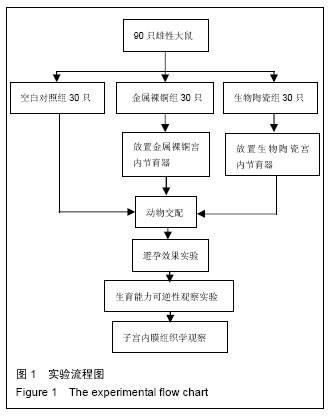
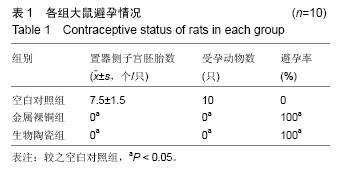
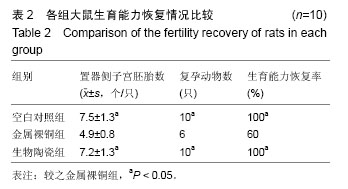
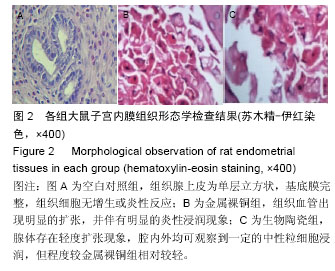
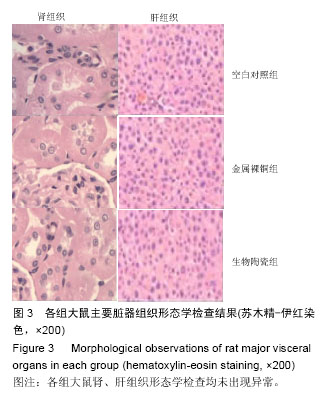
.jpg)